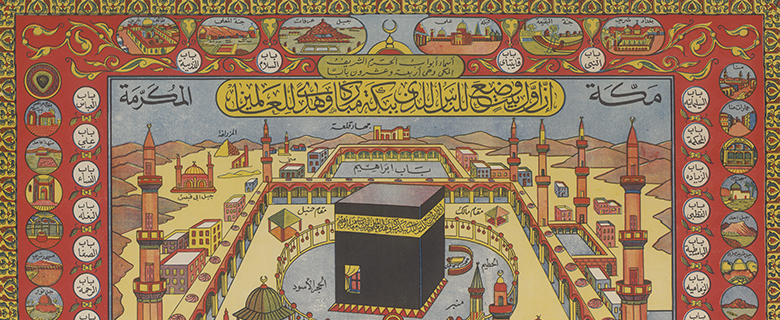
Around two million pilgrims have just experienced the most significant and spiritual journeys of their lives, having completed hajj.
It is a moment they will remember forever and proudly tell their family members and friends about and undoubtedly, they will have photographs and selfies documenting their experiences.
This desire for mementos of such a significant journey is, of course, not a new social phenomenon. Wherever they have travelled, humans have sought to take souvenirs to remind them of their travels. Over the centuries, the practice of documenting the journey to Mecca and obtaining a physical testimony of the pilgrimage has been deeply rooted in Islamic culture, with a tradition of physical testimony, in the form of a certificate written on paper, parchment or sometimes on a piece of fabric, that stretches as far back as the 5th century AH/11th century CE. Often, pilgrims sought to capture their experiences, perpetuate the key moments and create tangible records of their spiritual journey with Hajj certificates, and the existence of these certificates throughout history attests to the deep devotion and significance of the Hajj in Islamic practice.
The Library has one such centuries-old certificate in its collection and on public display in the permanent hajj exhibition, ‘The Sacred Journey’. Dating from 1690, the scroll certifies the owner’s visit to various holy sites and states that he was a hat-maker from Mashhad in Iran.
In the early 20th century, these prized hajj keepsakes took the form of colorful lithographs, the most popular of which had limited iconography and depicted one composite image, combining the three holy shrines in Mecca, Medina and Jerusalem in one certificate. The inclusion of small vignettes and references to Hajj-related rituals added depth and meaning to the design, and artists would often use photographs from which they would create their prints, lending a sense of three-dimensionality to their work.
The growth in popularity of these certificates – of which Qatar National Library has a small collection – had a knock-on effect, which was the proliferation of publishing houses producing them, particularly in Mecca, Medina and Cairo, which indicates the growing use of the certificates as a commercial commodity in the 20th century.
The intricate designs often included depictions of mosques, shrines, and landscapes, and even incorporated references to early Muslims, especially to the four rightly guided caliphs – the Rashidun – and pivotal events in Islamic history. These visual elements were intended to provide a landscape for instruction on important ritual practices and religious and cultural history, enriching the spiritual experience and knowledge of Muslims. Over the years, as they lost their value as a souvenir, they were often hung on the walls of mosques, homes and madrassas as a visual reminder of the holy sites of Islam.
As pilgrims from across the world leave Mecca, most will take home souvenirs of the most important journey of their lives, but can a selfie ever match the beauty and romance of the hajj certificates?
To see the hajj certificate dating from 1690 – as well as a host of other artefacts relating to the pilgrimage – simply visit the Library during opening times.
To read more about hajj and see the pilgrimage certificates online, visit the Holy Kaaba Exhibition at https://exhibits.qnl.qa/en/.

Add new comment